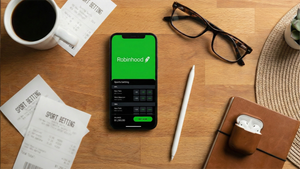When the 2020 edition was cancelled due to COVID-19, the future of Art Basel Hong Kong and other in-person art fairs was called into question. But the iconic Hong Kong event has a plan in place to weather the storm with a shift to a hybrid format, an embrace of digitalisation, and a focus on the safety of collectors, gallerists and art aficionados.
This press release features multimedia. View the full release here: https://www.businesswire.com/news/home/20210521005540/en/
Over two thirds of global art fairs planned in 2020 were cancelled. Art Basel Hong Kong was amongst them, with the announcement coming about five weeks before the fair was slated to start on the 17th of March 2020. Its 2021 edition was also pushed back from March to May due to continuing concerns around the pandemic.
The decision to hold the belated 2021 edition was a surprising one, but Global Director of Art Basel, Marc Spiegler, explains that it was the right choice.
“I think although we hoped to be standing at the end of the pandemic period, we’re standing at the beginning of a new era in the art world, and that’s an era that we firmly believe in the need for people to see art, and the need for people to meet gallerists and the need for gallerists to meet collectors in order to keep the business strong.
“As we come out of the pandemic, we will have a more hybrid version of the fair. On the one hand, the fairs of the future will have that physical dimension, the value of social interaction, the value of physically seeing works in front of you; on the other hand, they will have a very strong digital overlay. And that digital overlay will help to create more momentum ahead of the fair, for everyone, but also to transmit the energy of the fair to those who can’t attend.”
The pandemic has played a huge part in the digital transformation of an industry that is notoriously slow to change.
This year’s in-person component of Art Basel Hong Kong will be quite different than any of its previous iterations, Adeline Ooi, Director Asia of Art Basel, explains, “It’s compulsory masks on, we have a reduced capacity for the show in terms of the guests that we can welcome. COVID-19 test for everyone working in the show, we all have to be (tested) negative before we are allowed to enter the convention centre. And beyond that, if you look at the aisles behind you, they are definitely much wider that what we used to do.”
Art fairs make up a large part of the total cost of galleries around the world, accounting for 26% of total operating costs prior to 2020. But despite the high cost of attendance, the fairs are still an important component of the art market. Galleries cite outreach to collectors in key geographical locations and sales as the main reasons for participation.
But with gallerists stationed out of Hong Kong unable to travel or unwilling to undergo a 14 day quarantine, Art Basel Hong Kong has come up with a novel solution, which sees local proxies physically manning the booths and their foreign counterparts available to speak via teleconferencing.
“It is really difficult for us to promote an artist without being there. It is a solution that Art Basel gives us with this satellite booth, to have someone onsite,” said Loïc Garrier of Ceysson & Bénétière.
“The idea is to allow galleries to send the art to Hong Kong, even though they can’t be with us physically,” adds Ooi. “Through the QR code we provided in every booth, if the collector really wants to get in touch with a gallery owner, all he has to do is literally just pick up a phone, scan the QR code and someone on the other side of the world will be with them.”
Aside from satellite booths, Art Basel Hong Kong also came up with a novel way to showcase their collections. Despite the gloomy outlook for live events around the world due to the ongoing pandemic, high net worth collectors have continued to purchase art through both art fairs and through the online viewing rooms. Many have also expressed a willingness to attend art fairs in-person toward the tail end of 2021.
“We have introduced this year, this idea of a show experience assistant, which basically allow collectors from all around the world to join us here on the show floor via a phone,” said Ooi. “If you think about pre-2020, if you ever spoke to collector and asked them if they would buy online? I think the answer would generally be no. Especially within the art world we value relationships; we value the physical interactions with one another.”
Despite the challenges posed by the ongoing pandemic, Global Director of Art Basel, Marc Spiegler is still optimistic about the future of the sector and predicts that some of the new innovations for this year may actually become permanent features.
“Art Basel Hong Kong 2022, when we hope the whole world will be present, will be a fair that is not only what we hope will be the biggest fair in Asia, but will also be much more available to the rest of the world at a digital level,” said Spiegler.
Although the physical and digital realms might seem like a stark juxtaposition, the art world has embraced the concept of a hybrid art fair as the way forward, and satellite booths, online viewing rooms and show experience assistants are here to stay for the foreseeable future.
View source version on businesswire.com: https://www.businesswire.com/news/home/20210521005540/en/
Contacts
Bryan Hansen
PR Manager, USA
Hong Kong Tourism Board
bryan.hansen@hktb.com




